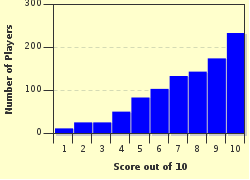Quiz Answer Key and Fun Facts
1. The asteroid belt is a well known astronomical "highway" that exists between the orbits of the gas giant Jupiter and the rocky inner planet Mars. However, within this "highway" other celestial bodies can be found. Which of the following can be found in the asteroid belt, Ceres being the example?
2. The asteroid belt is probably the most well known astronomical belt, however, a few other belts exist within our solar system. One example is the Kuiper belt, however, is the Kuiper belt closer to or further from the Sun than the asteroid belt? *See hint*
3. The ever so little Pluto was all the rage in 2006 when it was reclassified as a dwarf planet. Many people were furious about how Pluto was being treated and physics teachers across the world fainted at the prospect of losing their holy grail, the mnemonic for the planets! Which of the following was a reason for "downgrading" Pluto from a planet to a dwarf planet?
4. Science is separated into many individual parts but most of these parts link to each other in some way. For example, astronomy meets the field of geology in the science of astrogeology! An astrogeologist would be interested in the structure of which of the following, known for its tail?
5. The main reason that space and astronomy captures the attention of many admirers is the sheer scale of the Universe. The distances used in astronomy are truly beyond imagination and space is just getting bigger and bigger! We really don't have much idea as to what is out there and that is evident in that we still find new things within our own solar system! Which of the following is considered to be the boundary of our solar system?
6. The planet Earth orbits the Sun and is situated in the solar system. The solar system is in turn part of the galaxy known as the Milky Way and this is a massive star and gas system. One of the closest galaxies to the centre of the Milky Way is sometimes referred to as the LMC. After which of the following people is the LMC named?
7. There was once a scientist who spent most of his time looking for comets, however, he came across many other astronomical objects that just irritated him and he compiled a catalogue of them. Which of the following scientists is associated with the astronomical numbering system that is applied to objects such as the Crab Nebula and a spiral galaxy in the constellation Virgo?
8. Astronomy very often brings striking pictures to the attention of the public and hopefully such pictures inspire some people to consider physics as a future academic interest. One such example is the Horsehead Nebula which can be seen by telescope near a famous belt. The belt in question is part of which constellation?
9. There are very distant galaxies known as quasars and these are the most energetic bodies known in the universe. The word quasar is actually an acronym that stands for "quasi-stellar ___ source". Which of the following fills the blank?
10. The scientific method is very rigorous and for a theory to be accepted by the scientific community, that theory has to be based on foundations of sound evidence free from experimental contradiction.
Is the aspect of astrology that states humans are affected by zodiac constellations based on sound evidence and considered by the scientific community as valid?
Source: Author
jonnowales
This quiz was reviewed by FunTrivia editor
crisw before going online.
Any errors found in FunTrivia content are routinely corrected through our feedback system.

